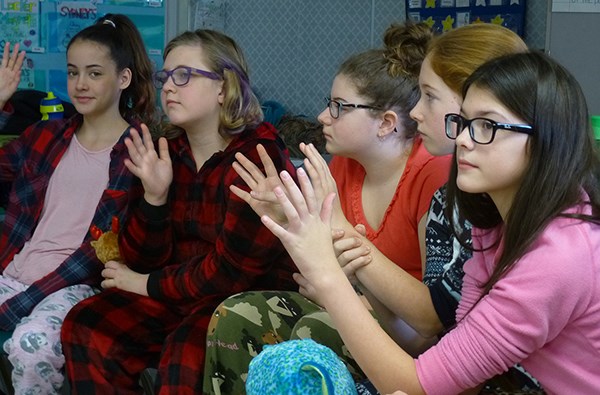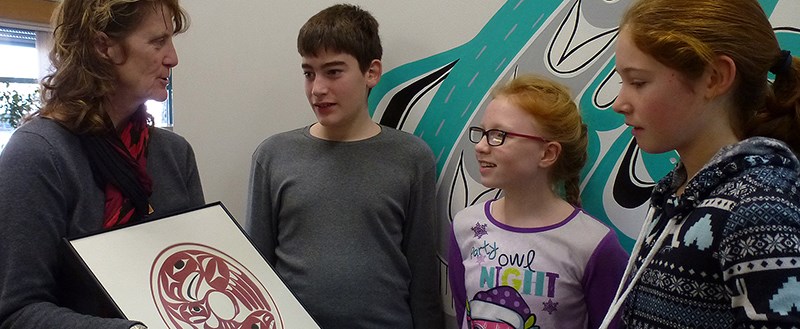A Port Coquitlam school with a First Nations name is taking to heart B.C. curriculum changes that aim to incorporate aboriginal perspectives.
At Kwayhquitlum middle school, which is preparing to celebrate its 21st anniversary next spring, staff and students are delving into aboriginal culture in everything from reading and art to classroom organization and resolving conflict.
"All of this is really around social and emotional learning, which has of course been part of the B.C. curriculum," principal Laurie Ebenal
The school is now more than just First Nations in name — Kwayhquitlum is an Anglicized version of Kwikwetlem, the name the local First Nation uses to refer to the small red salmon that ran in large numbers in the Coquitlam River — and principal Laurie Ebenal hopes the change will bring not only greater understanding of aboriginal perspectives but make middle school a more enjoyable experience for students.
"For the First Nations, learning is embedded in memory, history and story," said Ebenal.
With the school adopting classroom charters that promote positive feelings rather than rules, and starting the day with a talking circle that encourages students to share thoughts and feelings in a safe environment, Kwayhquitlum is borrowing liberally from First Nations teaching principals, according to Ebenal, who until recently was School District 43's aboriginal education co-ordinator.
"All of this is really around social and emotional learning, which has of course been part of the B.C. curriculum," Ebenal said, noting that the many of the notions contained in the First People's principals of learning are also part of SD43's Safe Caring Learning Communities objectives.

But for the students in Jen Morgan's Grade 6/7 class, talking circles are simply a way to put people in a good mood, or "GooMoo," as they call it.
"We wanted something fun," one student said as the class showed their agreement about GooMoo being used in the classroom charter by putting four or five fingers up and taking turns voicing their opinion.
To finalize the school charter, the students had to agree to all the terms, then sign it, and when they did, it was a moment of pride for teacher Morgan.
"That's all you guys," said Morgan when she read off the list of ways students promise to stay positive, prepare for class, act towards one another and resolve conflicts.
Ebenal said Kway is a perfect place to start integrating more aboriginal teaching in the curriculum because of its name (although she hopes to get it spelled correctly) and history. The building is full of First Nations art, including two spectacular house posts leading into the school library.
"It's more implicit than explicit," said Ebenal about the way the teachings are being incorporated, with teachers leading the way.
The students are also learning about the school's logo, which was created by Sto:Lo artist George Pennier and are reading and discussing a young adult novel called Touching Spirit Bear, about a troubled youth who deals with his issues through Circle Justice, a Native American justice and healing practice. Grade 8 students are sewing a button blanket they will leave behind as their legacy and an art walk is being created of donated native art.
The school also plans to follow students through their middle school years, documenting their stories, to see if they benefit from the changes introduced this year.
With the new model, Ebenal, whose teaching career began in First Nations schools in B.C., Kway could be be a model for other schools that are looking for ways to adopt aboriginal perspectives into the classroom in line with changes to the kindergarten-to-Grade 9 curriculum. But for Kway, adopting aboriginal methods and teachings is also a positive step toward supporting students who are at a sensitive age in their development.



